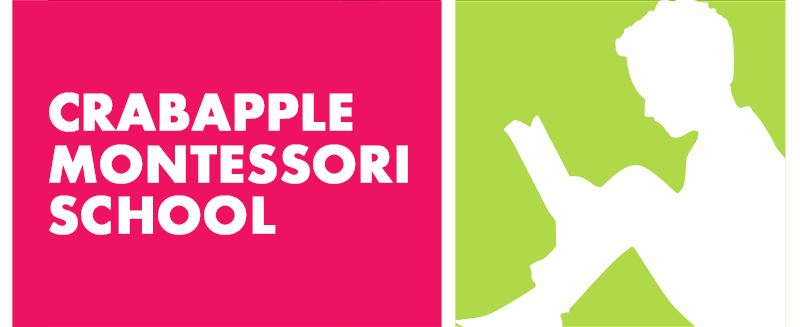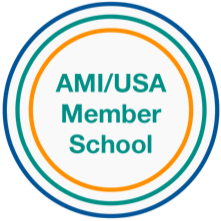MONTESSORI > Top 20 Questions
The number of Montessori schools is growing and key Montessori ideas are being integrated into many public schools and universities. Along with growing interest and acceptance, there are also questions and misconceptions. Here are some of the questions we hear most often.
-
1. What is Montessori education?
Creative. Brain-based. Beautiful. Profound. Joyful. This is the essence of Montessori – a 100-year-old education model that is both progressive and time-tested. Children emerge from Montessori schools with a love for learning, motivated, curious about the world, and capable of meeting challenges that come their way.
The Montessori model acknowledges that no one “teaches” a baby to sit up, or crawl, or walk. Each of these early development tasks is mastered along the child’s internal timeline as he or she scratches the “intellectual itch” to grow and learn in a new way.
That’s why children in a Montessori classroom are immersed in a carefully prepared environment with activities designed to stimulate their interest. The teacher’s role is to guide them on their quest to satisfy their developmental curiosity.
Because children work individually or in small groups monitored by the teacher, a Montessori education is tailored to the specific child. Children progress at their own pace, follow their own curiosity and learn an array of subjects simultaneously.
To learn more about Montessori education, visit The International Montessori Index, Association Montessori Internationale, North American Montessori Teachers’ Association, Aid to Life, and the American Montessori Society.
-
2. Who is the founder of Montessori?
Dr. Maria Montessori, a woman of great insight, intellect, and observational genius, began developing the Montessori philosophy in the early 1900s. As the first female pediatric physician, she followed her intellectual instincts to better understand how children learn and develop. She gained international recognition as a progressive educator and humanitarian, who was a friend of Mahatma Gandhi and Thomas Edison.
Why did some children do better than others? How could a teacher and classroom become more conducive to learning? How did the brain work?
From these profound child development questions, Dr. Montessori discovered keys to learning which form the basis of a Montessori education today. Through her years of experience with children around the world, Dr. Montessori proved that children are able to learn to read, write and calculate as easily and naturally as they learn to walk and talk. Her focus was on the development of the complete human being.
Her brain-based research is now over 100 years old and has withstood the test of time – evidence of the essential truth that Montessori works.
Spanning from birth to adolescence, Dr. Montessori’s observations, technique, and teachings are passionately pursued here at Crabapple Montessori School.
-
3. How is Montessori different from traditional education?
Traditional education emphasizes a one-size-fits-all approach to teaching and views the child as a blank slate on which to write information.
Knowledge is given to the students by the teacher. In many traditional schools rote memorization of facts constitutes success, and children stay seated at a desk gleaning whatever knowledge they can from the teacher talking at the head of the class.
The Montessori classroom is a “prepared environment” that encourages individual growth and learning. Children can move about the room selecting from a wide assortment of designed materials stored on well-organized shelves. They develop practical and intellectual abilities through individual exploration of language, mathematics, geography, geometry, art, music and more.
Parents new to the world of Montessori always remark on how quiet the classroom is, how beautiful it looks, and how focused the children are. This is because they are concentrated on the “work” of learning.
Seeing is believing! Stepping into a classroom at Crabapple Montessori School, parents immediately notice the difference. We invite you to experience Montessori yourself – please visit us for a tour. Call us at 770-569-5200 or contact us and set up an appointment.
-
4. How does Crabapple Montessori meet and exceed local and international education standards?
Crabapple Montessori School is certified by the Association Montessori Internationale (AMI). Not all Montessori schools have this certification.
As an authentic, private Montessori School, we have worked diligently to attain and maintain the Certificate of Recognition from AMI, which is granted only after a rigorous review process every three years to insure that standards are being met including –
- AMI-certified teachers in the classroom,
- appropriate class size and age representation in each class, and
- complete sets of materials from a manufacturer authorized by AMI.
Crabapple Montessori has also been accredited by the Southern Association of Colleges and Schools (SACS), the accreditation division of AdvancED.
We have gone beyond the local and international standards by engaging educational consultants to work on an ongoing basis with our Primary and Elementary teachers and curriculum development. We routinely bring in Montessori experts for teacher and staff training and parent education.
-
5. What is the “prepared environment”?
Modern-day pediatric brain research has taught us that the brain develops based on what the hands touch. The more activities a child learns to master with their hands, the more knowledge they gain.
The Montessori classroom is referred to as a “prepared environment” because it is filled with activities or tasks that children engage with using their hands and minds.
The environment functions as a teacher, offering new things for the child to learn. It is prepared for them ahead of time and laid out for their use.
For example, a young child may arrive at school one day and choose to work with the famous sandpaper letters – a stack of cards with individual alphabet letters made of sandpaper and raised off the card.
The child takes the activity off the shelf, chooses a space to work, and begins tracing each letter with the hand while making the sound of the letter.
The sandpaper letters activity combines the use of the hands to trace the letters, the auditory experience of the sounds of the letters, and the visual experience of seeing the letters.
The prepared environment is not shelves of toys laid out for children to play with briefly and toss aside. These materials are arranged in a beautiful environment that children learn to respect and care for. The activities are all age appropriate and designed to be challenging!
-
6. How is Montessori education brain-based?
Neuropsychologist Steven Hughes says, “Montessori education is the original, and, I think, the best brain-based model of education.” He explains that the body is mapped along the surface of the brain in a way that shows the important role of hands for brain function. That’s why he believes that for young children, the Montessori classroom with a focus on hands-on activity and physical manipulation is more beneficial for brain development than a traditional school setting where children spend most of their time sitting and listening.
Other elements in the Montessori curriculum that Hughes recognizes as helpful for the development of brain networks are the secure setting, repetitive exercises, multi-sensory experiences, and gardening.
Source: Stephen Hughes, Ph.D., L.P. “Neuropsychology and Montessori,” AMI/USA News, January 2009. Read the complete article, which is a transcription of a speech by Dr. Hughes.
-
7. How does the design of our school help children learn?
Crabapple Montessori School was designed and constructed in 2002 specifically for the Montessori curriculum.
The spacious classrooms have areas for specific types of developmental activities. All around the room at any time children are engaged in different activities that match their interests and their place on the learning continuum. However, the layout of the room allows teachers to closely observe each child’s progress, giving guidance for following a path of development and mastery. The rooms are also constructed to allow observation by parents and staff.
Built-in shelving and storage helps to organize and display the many hands-on learning materials that are integral to the Montessori curriculum.
Every classroom is bright with natural light from windows and a door that opens onto a garden for exclusive use of that class. Children tend the plants and learn the importance of caring for other living things.
The concept of a prepared environment is central to the intellectual development of the child, and having a school designed for this methodology is an important advantage for the Crabapple Montessori School.
-
8. Why mixed age groups?
Dr. Maria Montessori’s research yielded results that parents of multi-age children already know: that children love to teach each other and learn from one another.
Developmental research shows that people reinforce their knowledge when they teach it to others. Anyone who has ever had to teach a skill to someone else knows that the process of explaining a new concept or helping someone practice a new skill leads the teacher to learn as much, if not more, than the pupil. An older child helping a younger one is pivotal to the success of a Montessori classroom.
Having children in classrooms grouped together in ages three to six or six to 12 means that older children are often helping younger children with their work while solidifying their own knowledge.
-
9. How big are the classes?
A Montessori class for the primary age is fairly large, typically around 28. Since it is a mixed-age class with ages between three and six years, a large classroom provides a better mix of different ages and sufficient numbers of the same age. This allows effective interactions between the children of the same age as well as different age groups.
This classroom size does not pose a challenge for the teacher since the carefully prepared environment allows children to function independently with minimal help from the teacher.
-
10. How can our classrooms be both active and orderly?
When you visit a Crabapple Montessori School classroom, you’ll hear the vibrant buzz of children interacting and learning. Children who are talking are using their voices respectfully and not interrupting those who have chosen to work independently. You’ll see a lot of activity as children move about the room, engaging in a lesson or putting materials away and moving on to a different area.
The order in the classroom is the result of the Montessori emphasis on both independence and community. Children help establish and learn the rules of order that keep the environment safe and productive. They learn to handle materials respectfully, put them in their place when their work is done, and help others. In this environment, children learn and embrace order and self-discipline.
-
11. Why should my child stay in the 3rd year of the Primary program?
The Primary program is based on Maria Montessori’s theories of psychological development, which concluded that children needed to be grouped according to their three-year development stages. Research indicates that things really begin to “come together” in the third year.
Because Montessori is not about memorizing facts but being able to ask questions and find answers, Montessori materials start out to be concrete and slowly move to the abstract. By the third year, facts begin to be internalized.
By going through a three-year cycle, a child develops a high degree of self-confidence, independence, and enthusiasm for the learning process and can adapt to all sorts of new situations.
While there are compelling reasons to consider keeping children in Montessori school through the Elementary program and beyond, if they do transfer to a traditional school, by the time they are in the first grade, they will already be well-prepared to make new friends and learn new things.
-
12. If children are left to choose their own activities, won’t they just do the same thing every day or end up doing nothing?
No. The teachers are highly trained in observation. When a child has mastered a skill, the teacher will give the child a lesson that is more challenging, considering the age and interest of each child.
Because the environment is so stimulating and exciting, children seldom “do nothing.” There are hundreds of prepared lessons for the child to choose from every day! This is another positive aspect of the prepared environment.
-
13. How are children in the Primary program learning to read early and master complex mathematical operations?
At Crabapple Montessori School, the phonics approach to reading helps children learn to read early and easily. It links the verbal and written vocabulary and allows the child to expand his or her vocabulary independently.
Mathematics activities at Crabapple Montessori School help children learn and understand the concepts of math by manipulating concrete materials. Through these activities, the child internalizes concepts of quantity, sequence, decimal system, place value and explores the processes of addition, subtraction, multiplication, and division. This work gives children a solid understanding of basic mathematical principles, prepares them for later abstract reasoning, and helps develop problem-solving capabilities.
-
14. How do teachers keep track of progress?
The teacher observes the activities of each student throughout the day and keeps an inventory of the lessons and projects completed, along with notes. Progress in social and emotional development is also noted, and detailed summary reports are prepared twice a year for parent conferences.
-
15. How does a Montessori education impact the child’s life at home?
Practical skills, independence, respect for the environment, and helping others are all emphasized in the Montessori curriculum at Crabapple Montessori School. Parents are often amazed when their young children are able to do more for themselves, are eager to help with family chores, and are careful about keeping their toys and personal belongings in order.
The Montessori curriculum is designed to allow children to accomplish their school work during the day so that they do not have to spend the evening doing homework – they can spend this time involved in activities with friends and families. This contributes to the development of the complete human being – the ultimate goal of a Montessori education.
-
16. What type of extracurricular activities does Crabapple Montessori School offer?
Throughout the year, school staff and specialty instructors from the community offer after-school classes in music, foreign language, dance, sports and other areas of interest.
We also have special events year-round for children and families including the Saturday Breakfast Social, Fall Festival, Morning with Dad, Morning with Mom, “Love Around the World” family social, and Parent Nights. The Crabapple Montessori Parent Association is actively involved in coordinating fun activities that everyone in our community enjoys.
-
17. How do children transition from Montessori to traditional schools?
It has been our experience, and the experience of virtually all Montessori schools, that the transition is very smooth. The brief adjustment period is no more than the adjustment that occurs when a child transfers from one traditional school to another.
Crabapple Montessori School students can continue their Montessori education in our Elementary program.
-
18. How does a Montessori education balance IQ and EQ?
One of the fundamental principles Maria Montessori believed in was the development of the complete human being. In the Montessori classroom this is reflected in the way each child is guided to develop full intellectual potential, and each class is structured as a community where children develop the social skills they will need to become productive members of society.
In recent history much media attention has been given to the fact that a high IQ alone does not equip an individual for success – EQ or emotional intelligence is also critical. The Montessori curriculum builds in an IQ /EQ balance with carefully designed developmental activities that include individual work and group work in problem solving and conflict resolution. This balanced approach to human development means that Montessori graduates are well equipped to become self-assured adults who are successful in whatever field they pursue and frequently gravitate to positions of leadership.
Research has shown that Montessori children are well prepared for later life, not just academically, but socially and emotionally. They typically score well on standardized tests and consistently show enhanced ability for following directions, independent thinking, and adapting to new situations.
-
19. Who are some famous Montessori alumni?
It’s not surprising that many famous people are Montessori graduates, because the goal of the Montessori curriculum is to help children develop their full potential and learn how to think. These are just a few well-known Montessori-educated people representing different walks of life:
- Joshua Bell, American violinist
- Jeff Bezos, founder of Amazon.com
- Julia Child, first world-famous television chef
- Chelsea Clinton, correspondent for NBC News and daughter of Bill & Hillary Clinton
- Anne Frank, author of the Diary of Anne Frank
- Katherine Graham, owner/editor of The Washington Post
- Helen Hunt, Academy Award-winning actress
- Jacqueline Kennedy Onassis, editor and former First Lady of John F. Kennedy
- Larry Page and Sergey Brin, founders of Google.com
- Jimmy Wales, founder of Wikipedia
- Prince William and Prince Harry, sons of Charles, Prince of Wales
- Beyoncé Knowles
-
20. What do Sims videogame inventor Will Wright and Google founder Larry Page say about their Montessori education?
Excerpts from “The Montessori Mafia, “The Wall Street Journal, April 5, 2011:
“Montessori taught me the joy of discovery,” Mr. Wright said, “It’s all about learning on your terms, rather than a teacher explaining stuff to you. SimCity comes right out of Montessori…”
When Barbara Walters, who interviewed Google founders Messrs. Larry Page and Sergey Brin in 2004, asked if having parents who were college professors was a major factor behind their success, they instead credited their early Montessori education. “We both went to Montessori school,” Mr. Page said, “and I think it was part of that training of not following rules and orders, and being self-motivated, questioning what’s going on in the world, doing things a little bit differently.”


